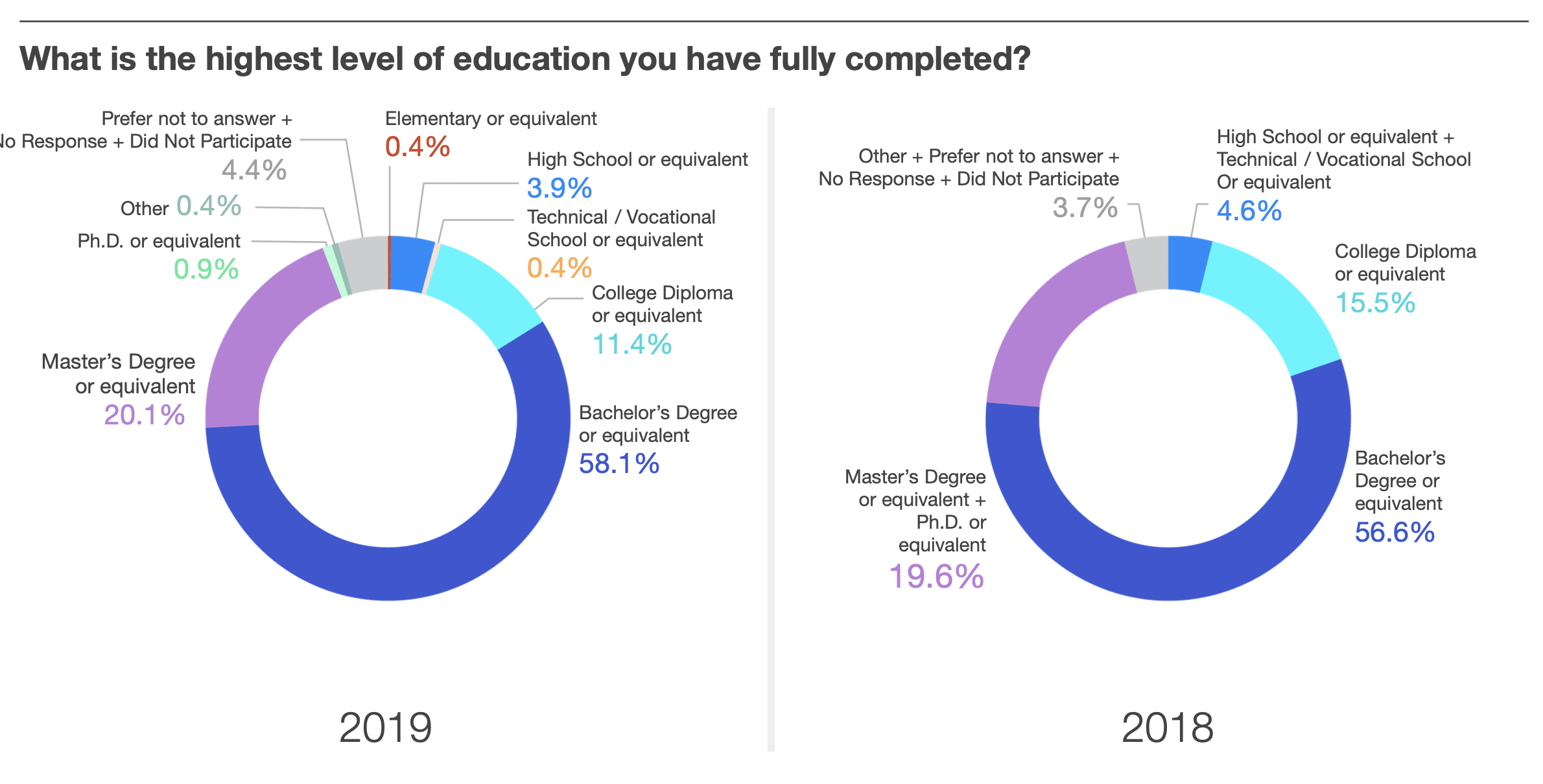Diversity is a fact, while inclusion is a human act. At Rangle, this is our mindset as we continue to enable and promote D&I (diversity and inclusion) at our office in Toronto and now in Tokyo, Atlanta, and Amsterdam too.
While we’ve made great progress, we know that the job is never done in reviewing and improving our efforts. That’s why our first D&I report wasn’t a ‘one-off’, but has become an ingrained part of our goal to become a better, more authentic workplace. That’s part of what makes Rangle, Rangle. Initiatives like this are important to everyone and not only enable people, but ensure that each voice in the organization is heard. Though the answers aren’t always what we’d like to see in a perfect world, they help us to establish a baseline to become better.
Establishing a baseline and measuring change
We’re still in the beginning stages of our D&I efforts. In 2018, we established a baseline and marked our commitment to both change and transparency. While we know we’re not the first to embark on this mission, it has provided us with measurable insights that allow us to make better decisions and measure the impacts of our D&I efforts. Different perspectives and identities not only create a better work environment but also enable better products for our clients.
So, how does this survey impact Rangle as an organization? It starts by looking at the numbers. This allows us to identify gaps and trends like, “Does the diversity of Rangle reflect the diversity of the cities in which we work?”; “Are we meeting our goals to improve gender parity in Technology?”
We can also identify areas where more support is needed, and effectively measure the impact of D&I initiatives, including whether employees feel equally supported. Taking in feedback from last year’s survey, we were able to not only take a hard look at how we approach D&I, but also revisit how we wanted to structure the survey this year. We changed some of the questions asked (including changing phrasing for a more inclusive and respectful approach) to better reflect our goals.
Here’s a snapshot of how we did this year, and how it stacks up to last year.
This year, we moved the needle on gender parity in non-leadership roles. In 2018, our ratio of women to men sat at 38% to 62%. Now, 44% of Ranglers identify as female, and 55% as male, and 1% identified as non-binary or gender fluid. What’s more, there’s a 50/50 split of female and male-identified folks in our new hire group (those who have been at Rangle for less than a year).
“Putting our values into action in recruiting has been a real win for Rangle this year,” says Cindy Diogo, Head of Talent Acquisition. “Gender parity in new hires is the right thing to do, plus it’s opened the company up to new pools of talent that may have been overlooked if recruitment was status quo.”
We’re particularly excited by the jump in Support for Diversity & Inclusion Index (SDII). This includes statements such as, “I feel that my team respects teammates with diverse and inclusive backgrounds and values their contributions”, and “I believe that my manager would respond immediately and seriously to deal with a situation involving discrimination.” In 2019, Rangle’s SDII rose 2.3% to reach 91% - this is an encouraging improvement for an already great statistic.
Below you can find some of the key results from our 2019 D+I survey compared to 2018.





Planning for the future: putting insight into action
One of the challenges in 2019 was understanding how to keep D&I at the forefront of our work as we scale, still ensuring everyone has the opportunity to be heard across all offices. We plan to keep taking small steps toward making a big impact in 2020 and beyond. This includes partnering with consultants in the space to develop a strategy that will help guide our decisions and behaviors, employing an evidence-based approach that takes into account best practices, and ensuring transparency in how we evaluate opportunities and adjudicate issues or conflicts. By implementing these tactics, our aim is to create clear pathways and better opportunities for Ranglers to have their voices heard.
